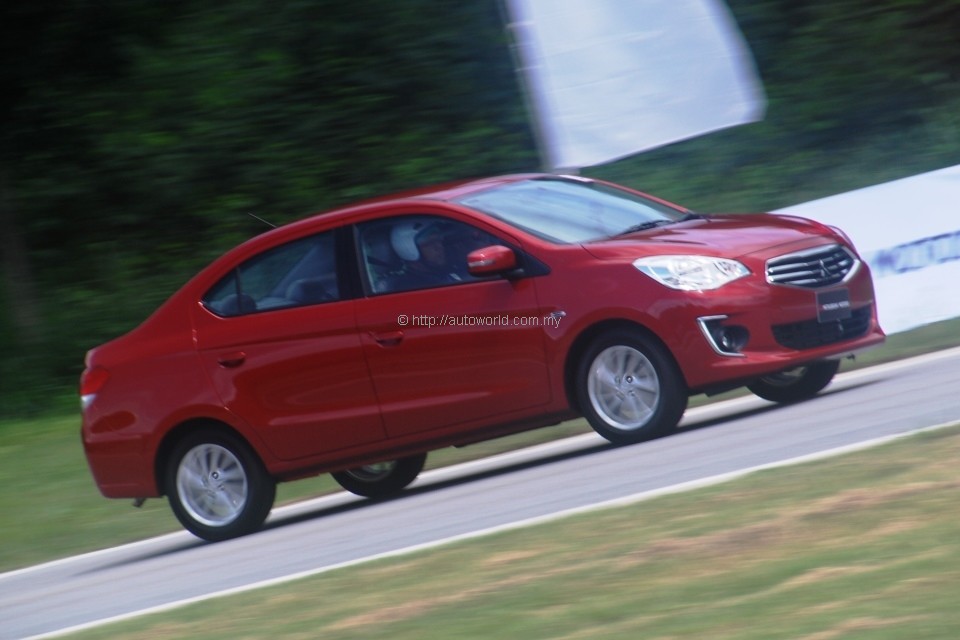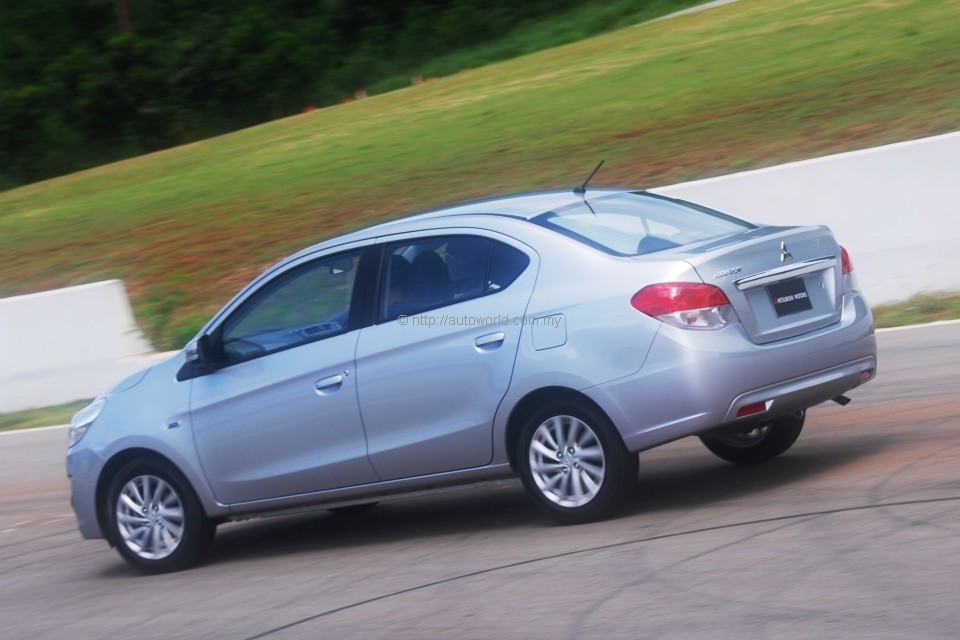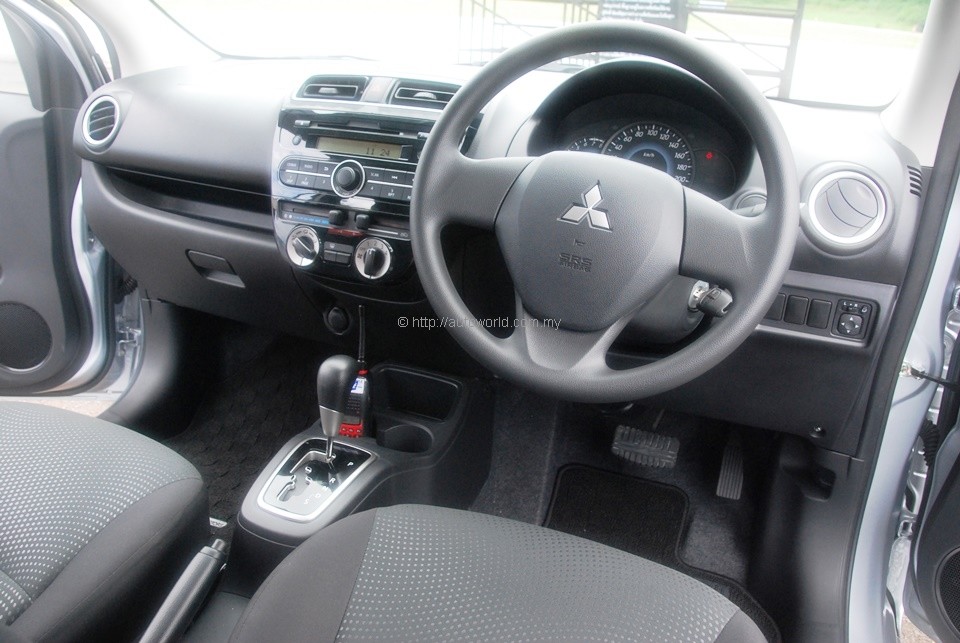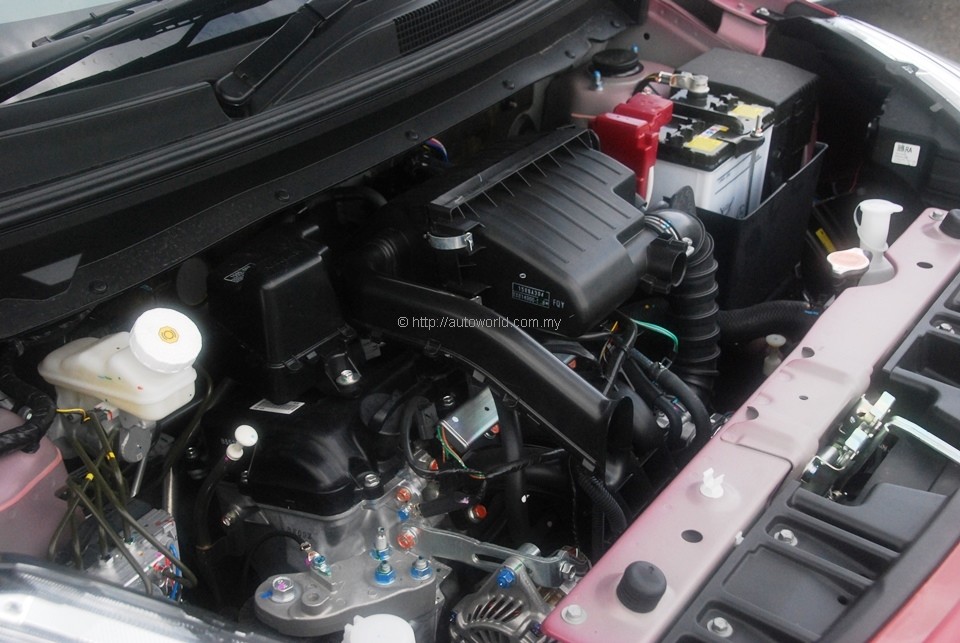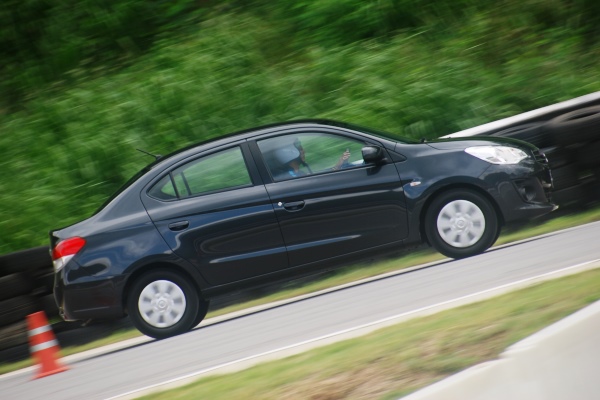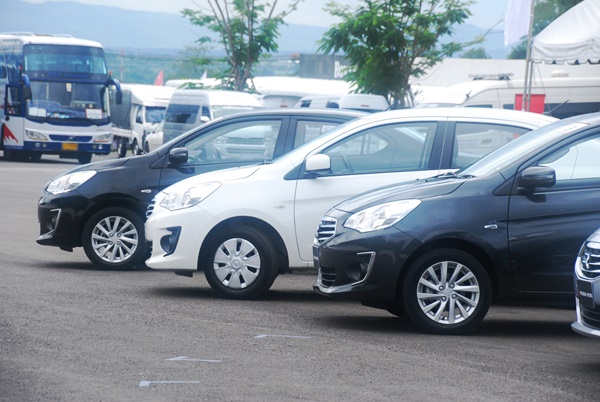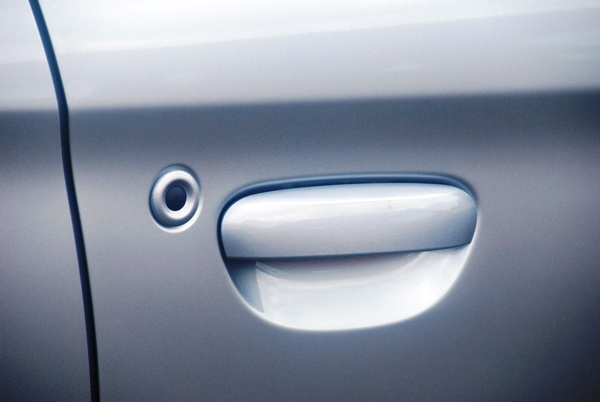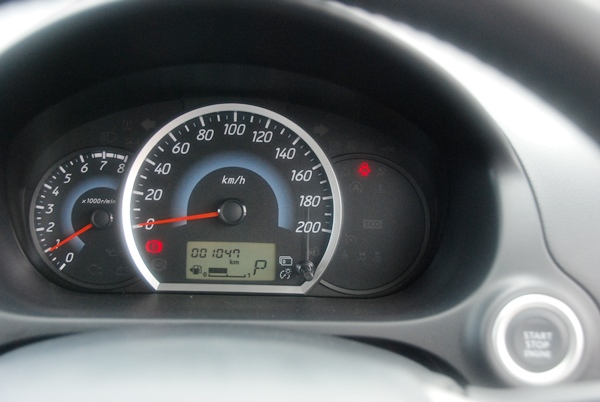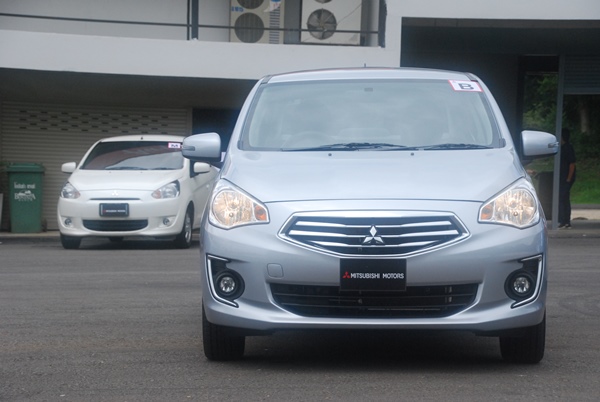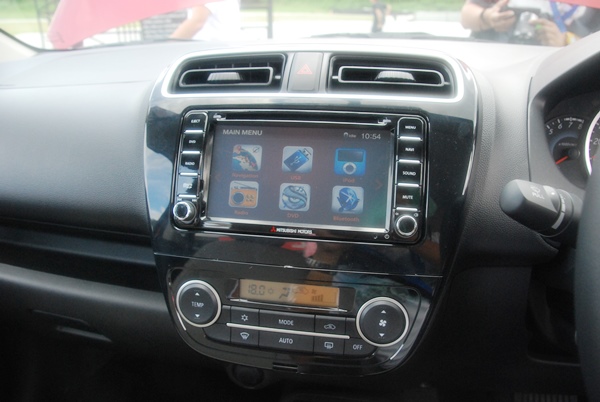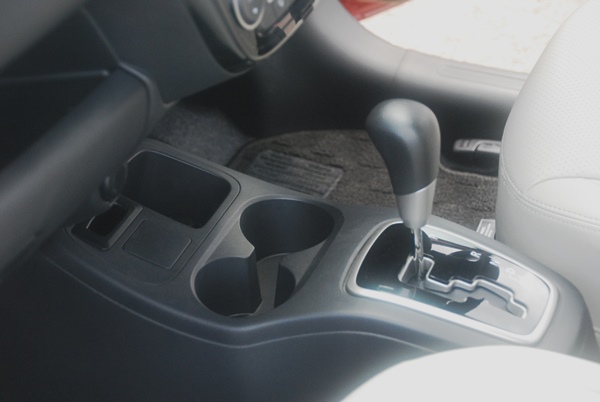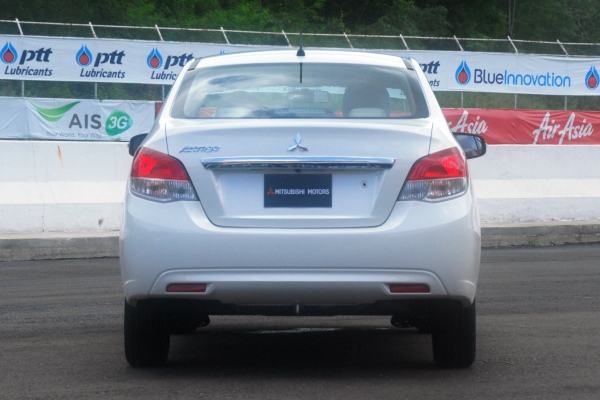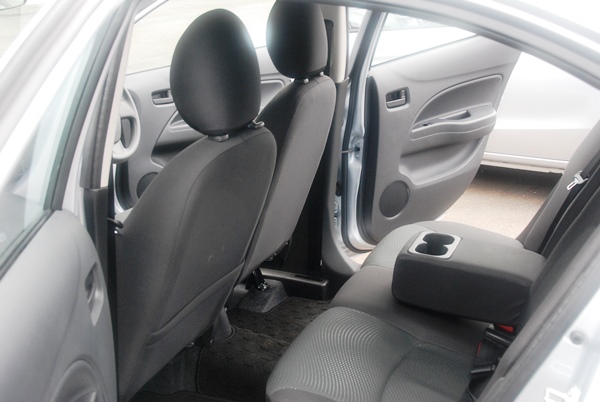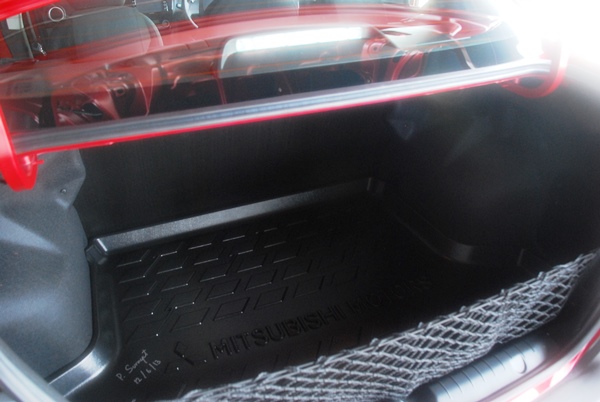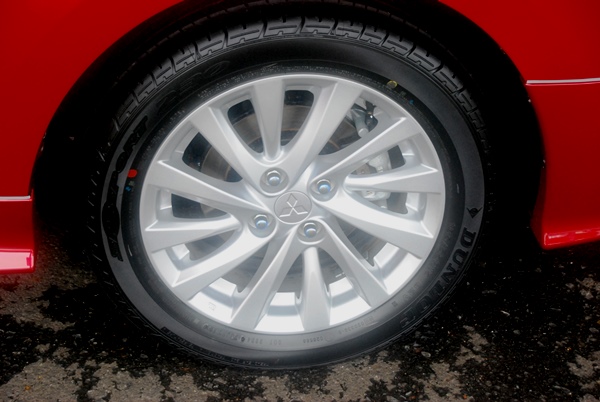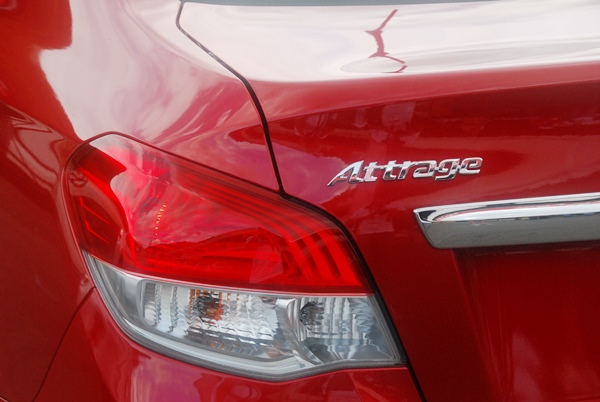Mitsubishi Attrage First Driving Impressions
The hatchback-to-sedan approach in making cars seem to be an increasingly popular formula these days, and joining that bandwagon recently is Mitsubishi, who will soon be launching an all-new Mirage-based sedan here in Malaysia. The new model is called the Attrage, created by combining the words ‘attractive’ and ‘mirage’. You pronounce the two As in the name as ‘ah’.
Sporting all of the Mirage’s mechanical make-up, the Attrage qualifies for tax incentives in Thailand under the Thai Government’s eco car initiative, which has the following clearly defined parameters – fuel efficiency of 20km/l or better based on European test cycles, meeting Euro 4 exhaust gas regulations, invest over THB5 billion into production in Thailand, and produce over 100,000 units per year after the fifth year of production.
Mitsubishi makes the Attrage at its factory in Laem Chabang Industrial Estate in Thailand’s Chonburi province, and there are firm plans for it to be exported to Malaysia by this year. Less than a month ago, we headed to Thailand for a quick first impression drive of the Attrage before it comes to our shores.
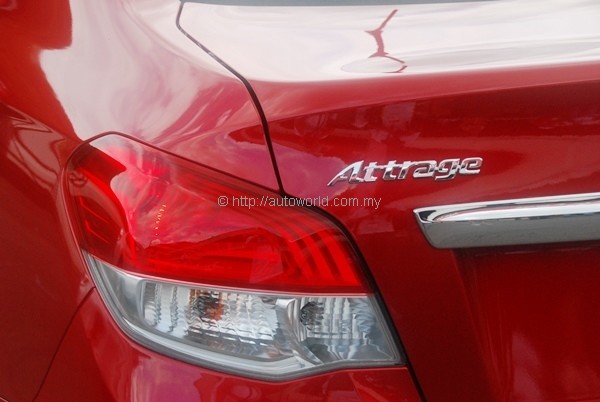 |
Prices & Variants
Preliminary information made available by Mitsubishi describe a three variant line-up of the Attrage that mirrors its hatchback sister car, starting with two GL variants operating manual and continuously variable transmissions accompanied by a range-topping GS CVT variant. Prices have not been announced, but it is unlikely to stray far from the Mirage’s price point, which spans from RM57k to RM66k.
With regards to equipment, we understand that front fog lamps, alloy rims, rear seat centre arm rest, dual airbags, ABS, EBD, and reverse sensors will be offered as standard equipment. The GS model adds side mirror-mounted indicators, steering mounted controls, keyless entry, push start button, and auto climate control to the list. In car entertainment was not specified; some units in our Thai test drive had touchscreens, but we can’t say for sure whether they will be offered in our market.
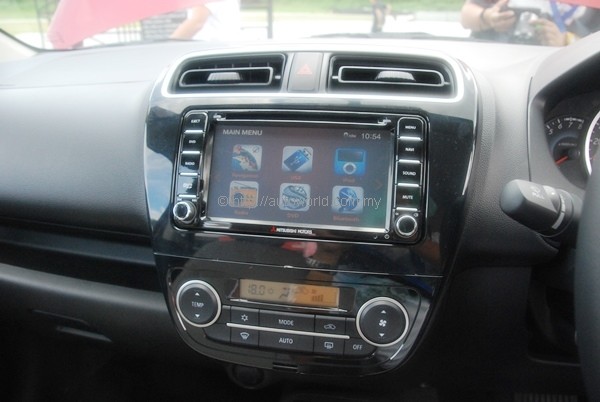 |
| Multimedia touchscreen unit found in Thai-spec models. |
Specifications
Powering the Attrage is the same 1.2-litre 3-cylinder MIVEC engine sitting in the Mirage’s engine room. Outputs were not officially stated, but we don’t expect the figures to stray far, if at all, from the Mirage’s 77hp and 100Nm. We asked about the possibility of a bigger engine, and we were told that Mitsubishi might be persuaded to plonk in a bigger engine with sufficient demand, but the engineers warned that anything bigger than the existing 1.2 triple will upset weight balance considerably.
The standard manual transmission has five speeds, but that’s unlikely to concern the majority of buyers who will be going for the CVT option. Taken wholesale from the Mirage, the chassis sports familiar elements – MacPherson struts up front and a torsion beam at the rear. A combination of ventilated discs and drums, front and rear respectively, deliver stopping force. Steering assist is electric.
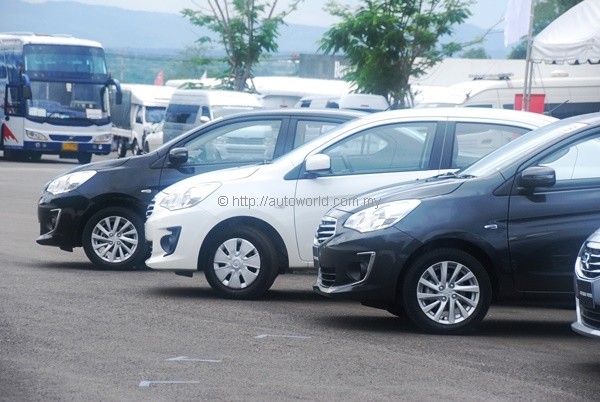 |
| Three variants to be sold in Malaysia – GL M/T, GL CVT, and GS CVT. |
Exterior
Whilst taking the Mirage’s running gear wholesale, Mitsubishi’s designers went back to a clean slate in shaping the Attrage’s sheet metal. As the Nissan Almera and Ford Fiesta / Mazda2 demonstrate, hatchback to sedan conversions typically produce awkward proportions. Bulbous rear quarters are generally unavoidable, but Mitsubishi was able to graft decently balanced body proportions for the Attrage. Attractive would be too generous a descriptor, but the terms ‘ugly’ and ‘weird’ are adjectives which we will strike out.
Overall styling of the Attrage is clean and pleasingly bereft of fussy details. Two parallel character lines define its side silhouette, but as a whole surfaces are free from unnecessary clutter. Aerodynamics is supposedly a strong point of the Attrage, with Mitsubishi claiming a drag coefficient of 0.29. The only less-than-impressive detail about the exterior is the use of old-fashioned lift-type door handles, as opposed to grab handles which you can find even in a Proton Saga FLX.
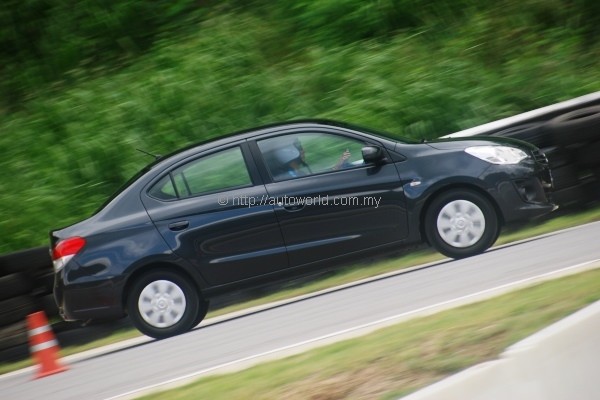 |
| Hatchback origins mean bulbous proportions are inevitable, but overall shape is hardly awkward. |
Interior
Owners of the Mirage will find the forward portion of the Attrage’s cabin a familiar place, with the dashboard and centre console being all but identical. Nothing wrong with that as the Mirage’s cabin is a clean and efficient design. Nothing in the way of plush materials, but build quality is decent when compared against class standards, and ergonomics are generally faultless – then again, this is a simple car with few features.
Behind the B-pillars, accommodation is impressively spacious, with enough legroom to give the class-leading Almera something to think about. Rear occupants also get a centre armrest and power windows – it’s no Mercedes S-Class to be sure, but it’s a decent place to spend a long journey in. Luggage space was not quoted to us, but from our visual estimations, there should be at least 430 to 450 litres i.e. it’s big enough.
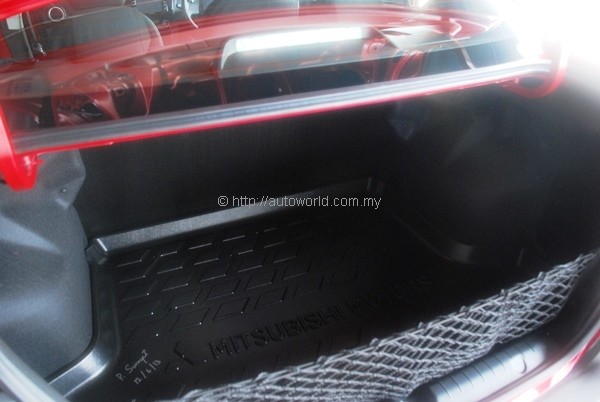 |
| Boot volume is decent. Gooseneck hinges will impede on some space. |
Driving Impressions
At the isolated Bonanza International Speedway track in Khao Yai, Mitsubishi lined up units of the Attrage for us to drive in short laps around the track. Other vehicles in the segment, namely the Almera, Toyota Vios, Honda Brio Amaze, and even the Mirage itself were made available for comparison. I managed to drive a lap each of the Attrage in manual and CVT form as well as the Mirage before our session regrettably ended.
The brief nature of our session means that our impressions are accordingly fleeting, and we reserve our full judgment on the car until we drive it again more extensively. In the simple exercises lined up for us, the Attrage’s dynamics served up few surprises. It is unsurprisingly not as fluid as the Mirage around bends, and body roll is quite significant, even if the chassis actually holds its cornering lines quite steadily.
With less power on tap than even a Saga FLX 1.3, questions will naturally arise on the Attrage’s ability to haul itself when packed a full load. The manual version unsurprisingly offers better acceleration, but the CVT is quieter and more refined. Having said that, we did not go beyond second gear in the manual version, which we are also glad to report having a decently satisfying gear shift quality.
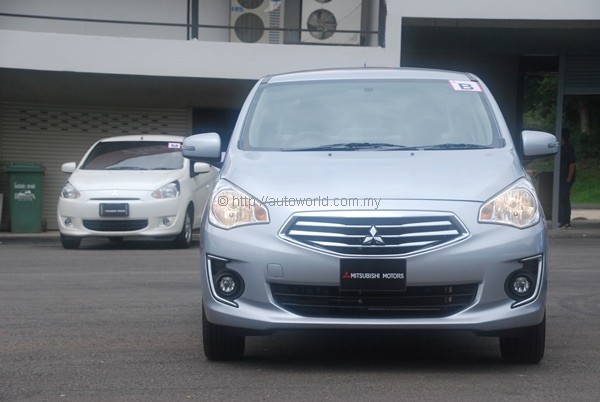 |
| Despite shared mechanicals, Mitsubishi did not carry over the Mirage’s front end. |
Verdict
The Attrage is a neatly styled and decently packaged compact sedan that seems eminently suited to negotiate the hustle and bustle of city traffic thanks to its compact dimensions and pleasing fuel economy. Bigger question marks await along our north-south highways and also the road up Genting Highlands, where the high-speed habits of Malaysian drivers may pose problems for the modest 1.2-litre powertrain.
Much will depend on how competitively Mitsubishi Motors Malaysia is able to price the Attrage. Its small engine size means it must undercut the Almera to start with in order to make sense to Malaysian buyers. We will wait for the opportunity to drive it locally before passing final judgement, but at the moment, we advise against striking it off your short list just yet.
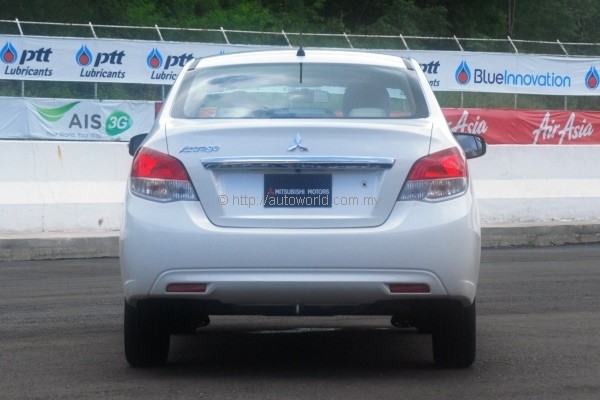 |
| Rear end adopts a simple and clutter-free look. |
Editor’s Note: The Mitsubishi Concept G4 quite accurately reflects the Attrage’s design with some cosmetic enhancements. It begins the last leg of its Malaysian tour today (17/7/2013) at One Utama, Petaling Jaya, where it will remain on display until 21/7/2013.




